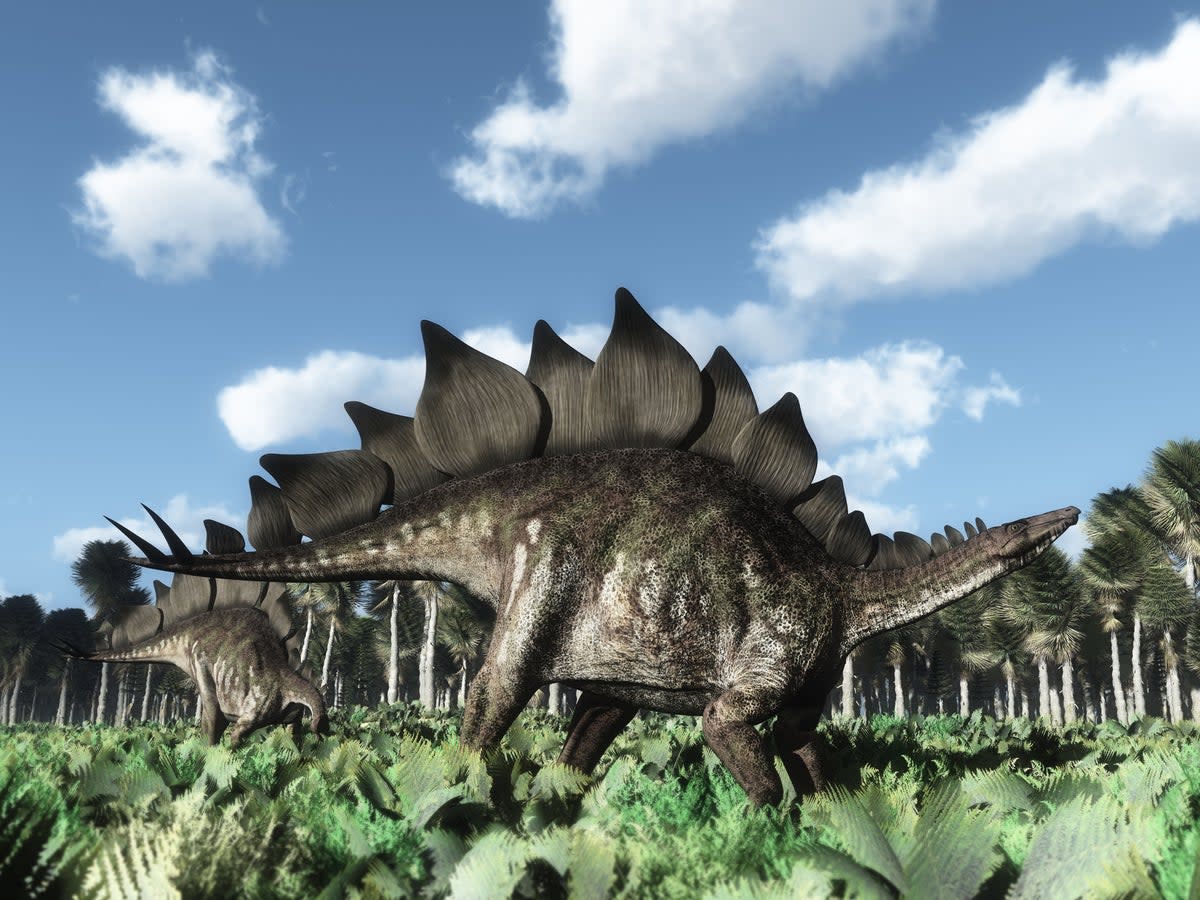Scientists discover first-of-its-kind small armoured dinosaur the size of a pet cat

Paleontologists have unearthed a first-of-its kind small armoured dinosaur in southern Argentina that likely weighed as much as a pet cat and walked upright on its back legs.
The dinosaur, named Jakapil kaniukura, lived about 100 million years ago during the Cretaceous Period and had rows of disk-shaped bony armor along its neck and back down to its tail, researchers said.
The unearthed “subadult” dinosaur was estimated to have been “less than 1.5m in body length and to have weighed 4.5–7 kg”, said scientists, including those from Universidad Maimónides in Argentina, in a study published in Scientific Reports on Thursday.
J kaniukura belongs to the thyreophoran dinosaur group, which includes stegosaurus with its bony back plates and spiky tail, as well as the mighty armour-covered ankylosaurus that has a club-like tail.
Scientists say the newly unearthed dinosaur resembles a primitive form of the thyreophoran group that lived much earlier than these better-known examples.
It is also a rare thyreophoran group dinosaur whose fossil evidence has been unearthed in the southern hemisphere, researchers say.
“The discovery of Jakapil in the Cenomanian of Argentina shows a completely new thyreophoran lineage for the southern hemisphere,” they wrote.
¡Felicitaciones!#RíoNegro | Investigadores/as del @CONICETDialoga y la Fundación Azara hallaron el primer dinosaurio acorazado bípedo de Sudamérica.
El Jakapil kaniukura, que habitó la Patagonia hace menos de 100 millones de años, mide 1,5 metros y pesa entre 4 y 7 kg. pic.twitter.com/bPEJGUYbkN— Daniel Filmus (@FilmusDaniel) August 11, 2022
Scientists suspect Jakapil may have had a two-legged stance unlike most armoured dinosaurs of the group due to lack of evidence of a “robust” arm bone, or humerus.
“The lack of a robust humerus in Jakapil allows us to reject a fully quadrupedal stance like that of the heavily built ankylosaurs,” researchers wrote.
“Unlike most thyreophorans, it seems to show a bipedal stance. Jakapil also shows that early thyreophorans had a much broader geographic distribution than previously thought,” they added.
However, citing an “incompleteness of the remains” analysed in the study, scientists urged caution when defining the stance of the new dinosaur.
“More complete material is needed to make accurate quantitative comparisons with other taxa and clarify its stance,” researchers added.

